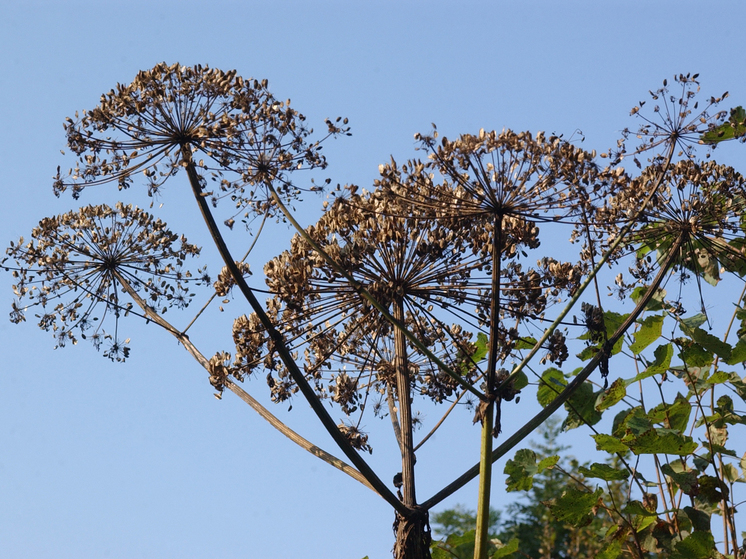Residents of the metropolis and its environs were warned about the terrible consequences of contact with hogweed
Hogweed thickets in the Russian expanses, alas, have long become an unpleasant but common picture. Fighting the ubiquitous weed turned out to be very difficult. But overseas, they are also sounding the alarm about the spread of this terrible plant, which is spreading throughout the United States. Experts warn: this common backyard plant can not only cause serious burns, but even change your DNA when touched.

New York authorities have sounded the alarm about an invasive giant hogweed, which is spreading throughout the state, but it is becoming widespread throughout the United States, writes the Daily Mail.
Giant hogweed can reach 3-6 meters in height, explains the British tabloid, has spiny leaves and blooms with white flowers during the summer, but contains toxins that can cause painful blisters. The sap of this creepy plant also contains a substance that, when exposed to ultraviolet light, can bind to DNA in skin cells, destroying DNA molecules in the human body.
Giant hogweed, the Daily Mail points out, is one of the very few North American invasive plants that can not only have a negative impact on human health, but also cause damage to the environment, causing a significant reaction when a person comes into direct contact with the plant.
The first sign of photodermatitis, a skin condition that causes inflammation after exposure to too much ultraviolet light, is reddening of the skin, which may also be accompanied by itching, writes the Daily Mail. Within 24 hours, the publication continues, burn-like lesions form, followed within two days by the appearance of large, fluid-filled blisters. The initial irritation, the tabloid notes, usually goes away within a few days, but the affected areas may become more sensitive under the influence of ultraviolet radiation. However, people with very sensitive skin may need to be hospitalized after exposure to hogweed. And even then, hogweed does not allow you to relax: even after the burns heal, they can leave purple scars that do not disappear for years.
The juice of giant hogweed contains toxins that cause phytophotodermatitis, which means, explains the Daily Mail, that they increase the skin's sensitivity to sunlight. The skin's reaction to hogweed juice can be aggravated by heat and sweat, meaning that the plant is most dangerous in the summer.
But that's just the tip of the iceberg: the worst of the damage is done at the microscopic level. When toxins enter skin cells, they can destroy the body's DNA molecules when exposed to the sun, writes the Daily Mail. As a result, these skin cells die, which is what causes the blisters that come with sunburn.
Medical experts recommend that people who come into contact with this dangerous plant immediately wash the affected area with soap and water.
Giant hogweed is native to the Caucasus Mountains and Central Asia, writes the Daily Mail. It was first introduced to the United States in 1917, when it was planted in a New York garden. Since then, this plant plague has spread throughout the Northeast, the Great Lakes region, and Washington and Oregon.
Giant hogweed is especially common in New York State because in the early 1900s, local garden centers sold the plant as… decoration. Today, giant hogweed can be found in every county in the state. And because this plant is an effective reproducer, it is extremely difficult to get rid of, the Daily Mail notes. After all, one giant hogweed plant can produce up to one hundred thousand seeds.
The New York Department of Environmental Conservation (DEC) launched a program to eradicate these plants back in 2008. As of 2023, giant hogweed has been completely eradicated from 61 percent of known sites in the state. And yet, there are still more than 1,000 places where these poisonous infestations are still present. The New York department urges anyone who sees or comes into contact with a giant hogweed plant to report it to authorities so they can remove the plant from the area. Authorities warn: Never try to remove it yourself. If you come into contact with hogweed sap, experts recommend avoiding contact with your eyes, washing it off immediately, avoiding sun exposure, and covering the affected area. Applying sunscreen to the affected area can also help prevent serious burns.




















































Свежие комментарии